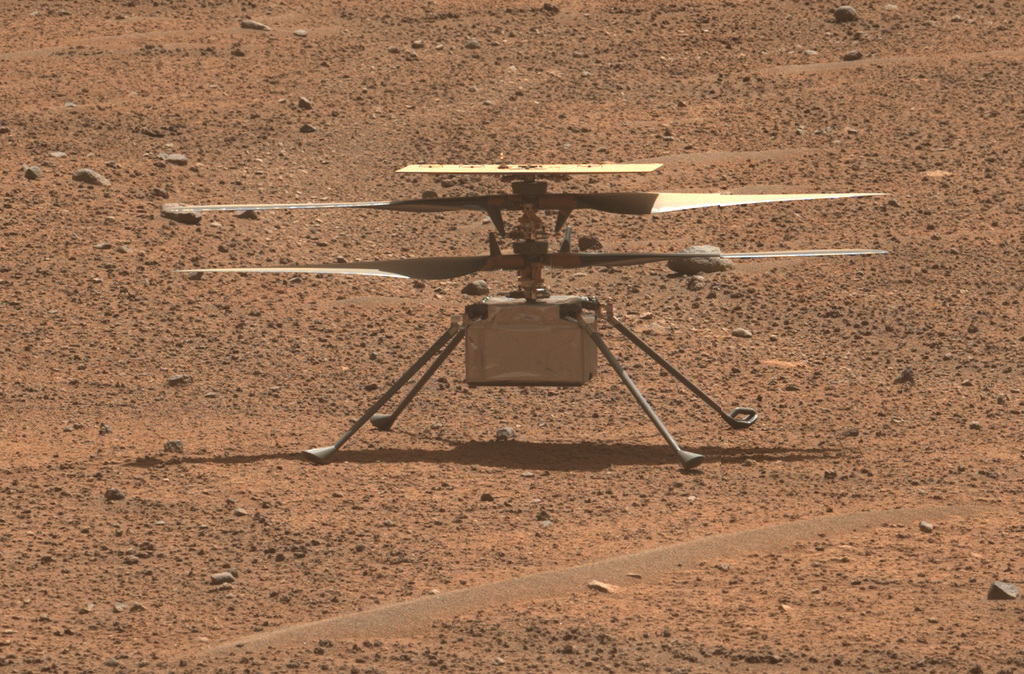NASA’s Ingenuity Mars Helicopter has completed its 54th successful flight, marking its first flight since an unexpected interruption on July 22nd. The 25-second up-and-down hop on August 3 not only demonstrated the resilience of Ingenuity, but also provided crucial data that could potentially unlock the secrets behind the early termination of its 53rd flight.
A Brief Recap of Flight 53
Flight 53 was originally designed as a 136-second scouting mission, aimed at capturing intricate imagery of Mars’ surface to enhance the scientific efforts of the Perseverance Mars rover team. The flight plan was complex and ambitious, involving a northward journey spanning 666 feet at an altitude of 16 feet and a speed of 5.6 mph.
The helicopter was then programmed to execute a vertical descent to 8 feet, hover, and obtain detailed imagery of a rocky outcrop.
Following this, Ingenuity would ascend to a height of 33 feet, allowing its hazard divert system to initiate before commencing a vertical descent for a controlled touchdown.

An Unanticipated Outcome
However, the intricate flight plan took an unexpected turn as Ingenuity’s autonomous journey unfolded. The helicopter completed the first half of its flight, covering 466 feet at an altitude of 16 feet. At this point, a flight-contingency program was triggered, leading to an automatic landing.
The entire flight, from takeoff to landing, lasted for a total of 74 seconds. The quick response of Ingenuity’s programming, including the “LAND_NOW” program designed to ensure immediate landing under certain conditions, demonstrated the effectiveness of the team’s preparations.
The Science Behind the Early Landing
Teddy Tzanetos, team lead emeritus for Ingenuity at NASA’s Jet Propulsion Laboratory in Southern California, shed light on the incident. According to Tzanetos, the early NASA Ingenuity Mars landing was likely prompted by a discrepancy between image frames from the helicopter’s navigation camera and data from its inertial measurement unit.
This unit is responsible for gauging Ingenuity’s acceleration, rotational rates, and orientation in space. Unfortunately, this wasn’t the first occurrence of dropped image frames from the Navcam during flight.
The history of this issue dates back to May 22, 2021, during Flight 6. A similar situation arose when multiple image frames were dropped, causing the helicopter to experience excessive pitching and rolling towards the end of the flight.
To address this concern, the Ingenuity team updated the flight software after Flight 6, successfully mitigating the impact of dropped images for the next 46 flights. However, during Flight 53, the quantity of dropped navigation images surpassed the limitations set by the software patch.
Learning from Challenges
Tzanetos expressed the team’s perspective on this challenge, highlighting its educational significance. He emphasized that while the aim was to avoid triggering the “LAND_NOW” program, the incident during Flight 53 serves as a valuable case study.
This experience will undoubtedly contribute to enhancing the performance and reliability of future aircraft designed to operate on other celestial bodies. With the successful completion of Flight 54 following this setback, the team’s confidence in Ingenuity’s capabilities remains unwavering.

